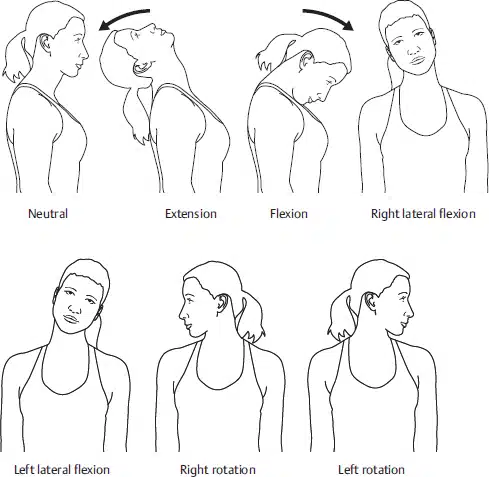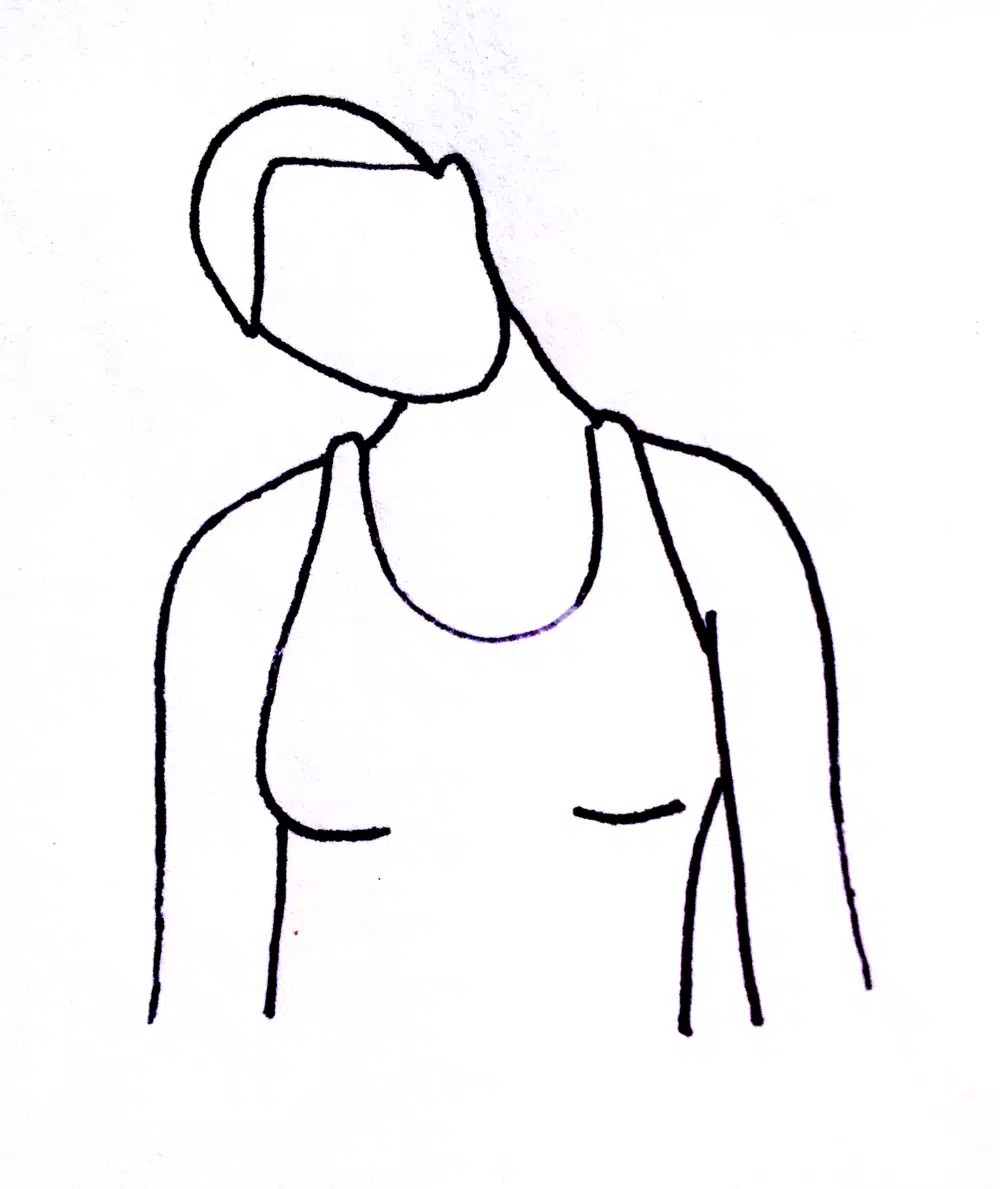4 Neck Exercises Helpful for Chronic Cervical Pain
The American Academy of Orthopedic Surgeons (AAOS) recommends this stretch to prevent injury and improve range of motion.
To ensure that this exercise program is safe and effective for you, it should be performed under your doctor’s supervision. Talk to your doctor or physical therapist about which exercises will best help you meet your rehabilitation goals.
Depending on your mobility, you may be unable to do some of these stretches and exercises at the beginning. Focus on what you can do and go from there. To ensure that this program is safe and appropriate for you, consult with your physician, After an injury or surgery, exercise will help you return to daily activities and enjoy a more active, healthy lifestyle. Following a well structured exercise program will help you return to daily activities and enjoy a more active, healthy lifestyle.
Stretch first : Run through as many of these stretches as you can at one time, devoting at least 30 seconds — ideally 1 to 2 minutes — on each (per side, if applicable) before moving on to the next.
4 Neck Exercises Helpful for Chronic Cervical Pain
 Flexibility: Strengthening the muscles that you strengthen is important for restoring range of motion and preventing injury. Gently stretching after strengthening exercises can help reduce muscle soreness.
Flexibility: Strengthening the muscles that you strengthen is important for restoring range of motion and preventing injury. Gently stretching after strengthening exercises can help reduce muscle soreness.
If you’re in too much pain to even think about activity, rest and ice until you feel better. Then attempt stretching and strengthening.
Before you start to stretch, warm your muscles up with some light cardio, like brisk walking, for 10 to 15 minutes. The longer you can devote to stretching, the better you’ll feel and the easier the exercises will be.
Stretch every day if you can, and aim to do the strength exercises 2 to 3 times a week.
If it start to hurt at any point, don’t push it. Stop what you’re doing and see a healthcare provider for further evaluation.
Getting Started
Warm up: Before doing the following exercises, warm up with 5 to 10 minutes of low impact activity, like walking or riding a stationary bicycle.
Stretch: After the warm-up, do the stretching exercises shown on Page 1 before moving on to the strengthening exercises. When you have completed the strengthening exercises, repeat the stretching exercises to end the program.
Do not ignore pain: You should not feel pain during an exercise. Talk to your doctor or physical therapist if you have any pain while exercising.
Ask questions: If you are not sure how to do an exercise, or how often to do it, contact your doctor or physical therapist.
Do you suffer from chronic neck pain? Do you have these symptoms?
- headaches
- tightness
- spasms
- limited range of motion of the neck
- tingling or numbness down the arms.
When neck, chest, and upper back muscles become weakened, tightened, and/or elongated, the shoulders can become rounded and the head sags forward. This poor posture in turn puts more stress on the cervical spine’s facet joints and intervertebral discs, as well as the muscles and ligaments.
Don’t exercise if you have severe neck pain or weakness in your hands or arms. If you get it while you exercise, stop right away and call your doctor.
Poor posture with the head too far forward may lead to chronic or recurrent neck pain that can also be accompanied by stiff joints, upper back pain, shoulder blade pain, and headaches. Fortunately, a neck exercise program may be able to help address most of these symptoms as follows:
Neck stretches
Flexibility and stretching exercises can expand or preserve the range of motion and elasticity in affected cervical (neck) joints, and thus relieve the stiffness that accompanies pain. Specific strengthening exercises can help maintain improved posture, which in turn can lessen or eliminate recurrent flare-ups of pain. As a general rule, neck stretching is best done every day, and some stretches can be done several times a day.
Aerobic conditioning
Aerobic exercise, commonly called “cardio,” is fueled by a steady intake of oxygen and keeps the heart rate and breathing levels elevated for the duration of the workout. Aerobic exercises increase blood flow to the muscles and soft tissues of the neck and upper back, which can help loosen the muscles and increase range of motion. In addition, after about 30 or more minutes of aerobic exercise, the body’s natural painkillers—called endorphins—are released and can help reduce neck pain.
Aerobic exercise can be done every day. Some good options include using a treadmill, stationary bike, or an elliptical machine, as well as an upper body ergometer or arm bike. For someone who has not done aerobic conditioning in a while, going for a brisk walk can be a good start.
Note: Each stretch and exercise should be performed to patient tolerance and not to the level of feeling pain.
4 Easy Stretches for Neck and Shoulder Pain
Flexion Stretch
- Keeping the shoulders back, bring the chin toward the chest by bending the head straight forward. A slight stretch will be felt in the back of the neck.
- Hold for 15 to 30 seconds.
Lateral Flexion Stretch
- Start in an upright, standing position.
- Keeping the shoulders even, bring one ear toward the shoulder by bending the head to one side. A slight stretch will be felt in the side of the neck.
- Hold for 15 to 30 seconds then repeat on the other side.
Levator Scapula Stretch
- Stand straight, raise the right hand and elbow, and place it on a nearby wall or door jamb.
- While keeping everything else still, rotate the head to the left about 45° (which is about halfway toward the shoulder).
- Tilt the chin downward to the left collarbone until a good stretch is felt on the back right side of the neck.
- Hold for 30 to 60 seconds, or as tolerated. Repeat on the other side.
Corner Stretch
- Face the corner of a room or a doorway.
- Position both feet together, about 2 feet away from the corner.
- Place a forearm on each wall (or door jamb) with the elbows slightly below shoulder height.
- Lean forward until a good stretch is felt across the chest and shoulders. If any pain is felt, the stretch can be reduced or stopped altogether.
- Hold the stretch 30 to 60 seconds and repeat 3 to 5 times.
Stretching a muscle to the full extent of your ability and holding it for 15 to 30 seconds is what’s called a static stretch, and there’s no harm in stretching that way as long you don’t stretch until it hurts.
But studies suggest a dynamic stretch is just as effective, and sometimes better, especially before your workout.
A dynamic stretch, like the Standing Cat-Camel, moves a muscle group fluidly through an entire range of motion.
Further information
The information provided on this site is intended to be used as an educational resource only. It is not intended to be medical advice for individual conditions. Consult with your physician prior to beginning any medical regimen.
Please contact a healthcare professional:
- * If you experience excessive or acute pain that cannot be explained by another cause.
- * If You have questions or concerns about stretches or exercises, to ensure the information displayed on this page applies to your personal circumstances.

